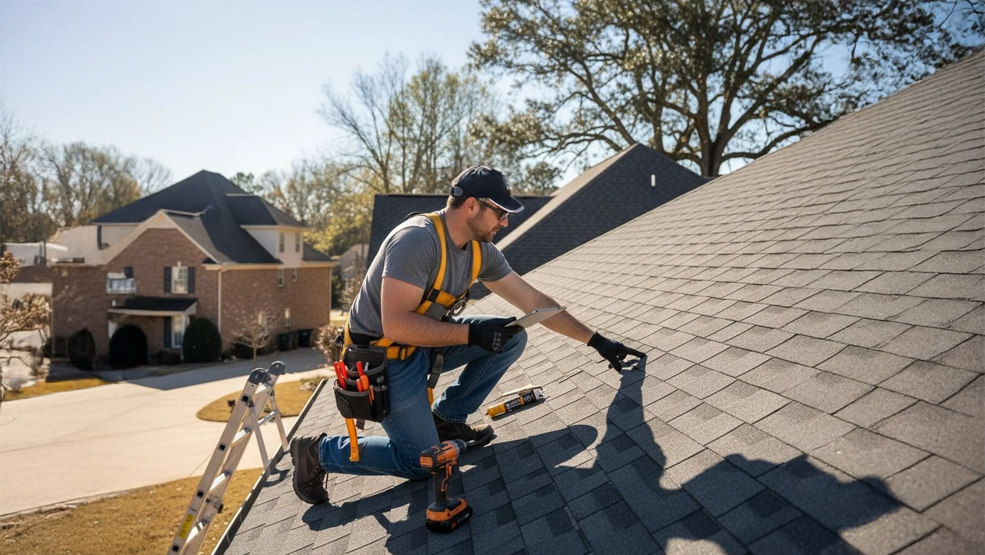Projected to surpass $1.4 trillion by 2030, the US home services industry is on the brink of monumental growth. This expansion is a testament to how much you, the consumer, rely on these indispensable services, from routine maintenance to emergency repairs. With in-home services evolving, the convenience and efficiency of on-demand services are reshaping expectations and setting new standards across the board. This surge is not just about numbers—it’s about the significant transformation impacting how services are delivered and experienced in homes across America.
This blog highlights the most important home services industry trends for 2025 and discusses the challenges and opportunities for forward-looking businesses.
Key statistics and takeaways
- The US online on-demand home services market is poised to reach USD 3.64 trillion by 2030.
- 89% of southern roofing contractors expect sales growth to increase over the next three years.
- The HVAC services industry grew by 10% in the last year alone.
- 70% of industry experts expected an increased demand for sustainability in home design.
- 81% of engineering and construction firms have adopted mobile platforms.
- The smart home market will grow from USD 174 billion in 2025 to USD 250.6 billion by 2029, reaching 92% household penetration.
- The market for voice-activated AI smart home solutions was USD 12.7 billion in 2024 and is expected to reach USD 514.62 billion by 2034.
- The use of augmented reality (AR) in interior design has grown by 40% in recent years.
- Smart home technology can save customers 10-12% on heating bills and 15% on cooling bills.
- Investments in home service management technologies have increased by 20% since 2016.
- The home remodeling market is expected to reach USD 509 billion in 2025.
- 70% of consumers prefer eco-friendly home services.
- Predictions estimate that the restoration services market will reach around USD 50.6 billion by 2026.
- The commercial cleaning industry is projected to generate over USD 468 billion by 2027.
Home services industry trends for 2025
Rise of on-demand home services
The US home services industry is undergoing a significant transformation, primarily fueled by the rise of on-demand home services. This segment is not only growing—it’s revolutionizing how services are delivered to your doorstep. Here’s a closer look at the key trends and statistics shaping this dynamic sector.
Expanding market size and growth projections
The on-demand home services market is witnessing robust growth, with projections indicating a continuous upward trajectory. According to Grand View Research, the US online on-demand home services market is poised to reach a market size of USD 3.64 trillion by 2030, growing at an annual growth rate (CAGR) of 14.3%.
Regional growth and the demand for sustainability
The demand for home services is at its highest in the southern part of the U.S. due to a combination of population growth and severe weather events, with a recent survey finding that 89% of southern roofing contractors expect sales growth to increase over the next three years, compared to 64% of roofers in the northeast. Extreme temperatures are also leading to expansion in the HVAC industry, with one report finding that the industry grew by 10% in the last year alone. At the same time, climate awareness is driving a higher demand for sustainable, energy-efficient appliances and services, with Zillow finding that 61% of new home buyers rank energy efficiency as a top decision factor.
Technological innovations and consumer preferences
Key trends driving this market include the integration of mobile apps and digital platforms, smart home technologies, and changing consumer lifestyles that prioritize convenience. A survey found that 81% of engineering and construction firms had adopted mobile platforms. More home service businesses are adopting digital tools for scheduling and customer management. This digital shift is largely due to the rising consumer preference for convenience and the growing usage of smartphones.
Technology and smart home integration
Technology in home services has been changing since the start of the decade. What we can expect in the upcoming years is that digital platforms, smart home technological integration, and eco-friendly practices will significantly drive growth within the US home services industry. Thanks to advancements in technology that enhance convenience and promote sustainability, the landscape of home living is evolving rapidly.
Rapid growth and household penetration
Smart home technology is seeing widespread adoption across the globe. Statista projects that the smart home market will grow from USD 174 billion in 2025 to USD 250.6 billion by 2029. Household penetration is expected to be over 77% in 2025 and exceed 92% by 2029. Home service providers that offer smart home integrations will be in high demand as this technology becomes even more ubiquitous in the future.
AI-integrated smart home technologies
In 2025, smart devices are expected to communicate with each other using advanced AI algorithms, creating a truly intelligent and intuitive home environment. According to one report, the market for voice-activated AI smart home solutions was USD 12.7 billion in 2024 and is expected to grow at a CAGR of 44.8% from 2025 to 2034, reaching USD 514.62 billion. Smart lighting and thermostats with automated systems that adjust based on natural light availability and occupancy, reducing energy usage while maintaining comfort. Security systems with enhanced safety features can be monitored and controlled remotely, providing homeowners with peace of mind.
Augmented and virtual reality in home design
Augmented Reality (AR) and Virtual Reality (VR) are transforming the home entertainment and design sectors.
- AR in home design allows homeowners to visualize potential furniture and decor in their actual living spaces before making a purchase, ensuring compatibility and satisfaction. According to AR Design Innovations, the use of AR in interior design has grown by 40% in recent years.
- VR in home entertainment offers immersive experiences that bring movies and games to life. According to Statista, the VR market is expected to reach more than USD 18 billion by the end of 2025, presenting a huge opportunity for growth in the electronics home services field.
Eco-friendly smart home innovations
Sustainability is becoming increasingly important in smart homes. By integrating solar panels and energy-efficient appliances, homeowners can significantly reduce their dependence on non-renewable energy sources while simultaneously cutting down on utility bills. For example, smart home systems further enhance energy optimization by regulating usage across various aspects of the household, including heating, cooling, and water heating. For example, Nest estimates that its smart thermostats save customers 10-12% on heating bills and 15% on cooling bills.
Operational efficiency through telematics and software
In the home services industry, the adoption of telematics, which uses GPS tracking and sensors to collect and transmit data about vehicles and equipment, alongside tailored home service software solutions, is revolutionizing operational procedures. Telematics facilitates real-time vehicle tracking, optimizes dispatching, and enhances overall efficiency.
Meanwhile, home service management platforms like Zuper empower contractors to elevate user experiences through streamlined, less intrusive service options. Investments in these technologies have increased by 20% since 2016, indicating a strong trend toward high-tech solutions in home services. Contractors are encouraged to become proficient in these innovations, ensuring they can meet the evolving demands of modern homeowners. This technological evolution is not just enhancing the functionality and comfort of homes. Still, it is also setting new standards for the home services industry as it adapts to the demands of modern living and environmental responsibility.
Market growth drivers and opportunities
The US home services industry is poised for substantial growth, with market drivers and opportunities shaping its trajectory. Here’s a closer look at these factors.
Home construction market forecast and opportunities
While the remodeling sector’s rapid growth has slowed a bit in the last year, it’s still expected to reach USD 509 billion in 2025, according to Harvard’s Joint Center for Housing Studies (JCHS). Deloitte found that construction spending surpassed USD 2 trillion in 2024, and new housing construction is expected to continue increasing as interest rates decrease.
Eco-friendly services and sustainability
With a survey finding that 70% of consumers prefer eco-friendly home services, there is a significant push towards sustainability. Businesses that incorporate energy-efficient installations and sustainable materials are meeting consumer demands and setting themselves apart in a competitive market.
Restoration and commercial cleaning
Home restoration and commercial cleaning sectors are expected to grow substantially. The home restoration industry might potentially double its worth, driven by aging home infrastructure and increased weather-related damages. Predictions estimate that the restoration services market will reach around USD 50.6 billion by 2026. Similarly, the commercial cleaning industry is projected to generate over USD 468 billion by 2027, propelled by heightened health awareness and the need for sanitized public spaces.
Future outlook
The home services industry is not just growing—it is evolving with the changing needs of modern consumers. As technological advancements continue introducing new efficiencies, and consumer preferences in home services shift towards more sustainable and tech-integrated solutions, the industry stands on the brink of a transformative era. This dynamic environment presents numerous opportunities for growth and innovation, making it an exciting time for stakeholders within the market.
Challenges and strategic responses
While poised for significant growth, the US home services industry faces several challenges that could impact its trajectory. Addressing these effectively requires strategic responses that mitigate risks and leverage opportunities for innovation and improvement.
| Top Home Services Industry Challenges for 2025 | |
|---|---|
| Skilled labor shortage | A major hurdle for the industry is the acute shortage of skilled labor.
|
| Economic influences | Recent economic developments have posed additional challenges.
|
| Housing market dynamics | The housing market’s current state presents a mixed bag of challenges:
|
| Technological integration and operational efficiency | While technology offers solutions, integrating it can be challenging.
|
Wrapping up
The US home services industry is booming in 2025, fueled by strong growth forecasts, tech innovations, and changing consumer needs. On-demand home services, smart home integration, and eco-friendly solutions lead the charge, shaping a transformed future. This evolution promises a robust, personalized, and efficient experience for both providers and consumers, reflecting a broader societal shift towards sustainability, convenience, and tech-driven living.
To capitalize on these home services industry trends in 2025, businesses can leverage field service management software and other solutions. These tools streamline scheduling, dispatch, and communication, optimizing technician time and boosting customer satisfaction.
Try Zuper, the most customizable field service management software designed for home services. Let’s talk and learn how it can be helpful to grow your home service business.



